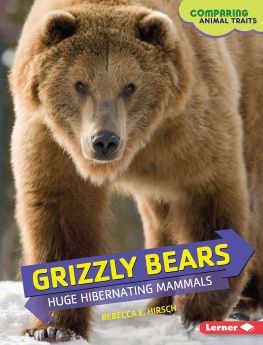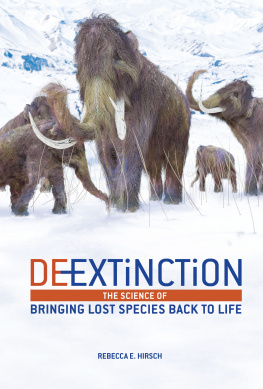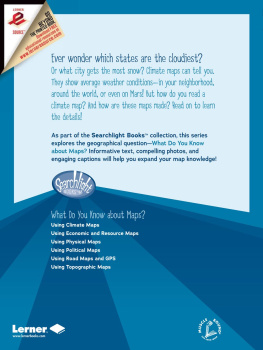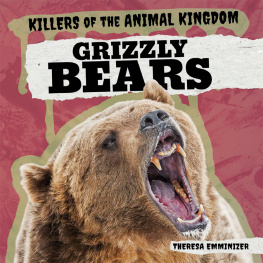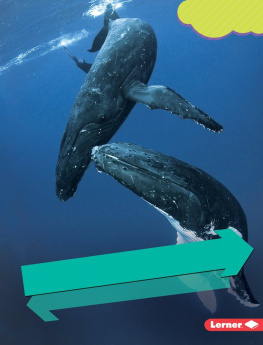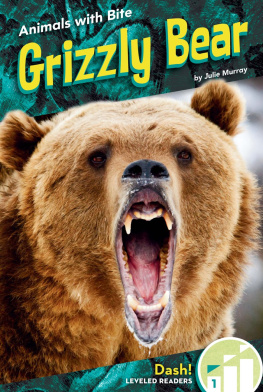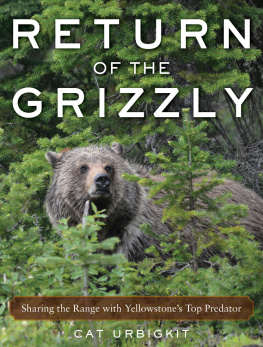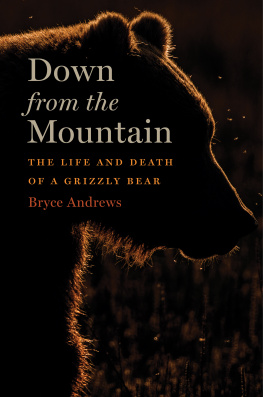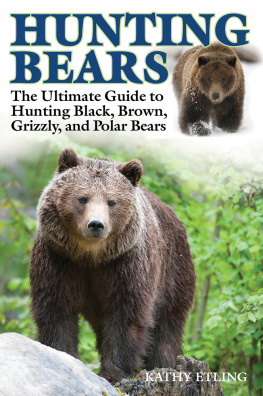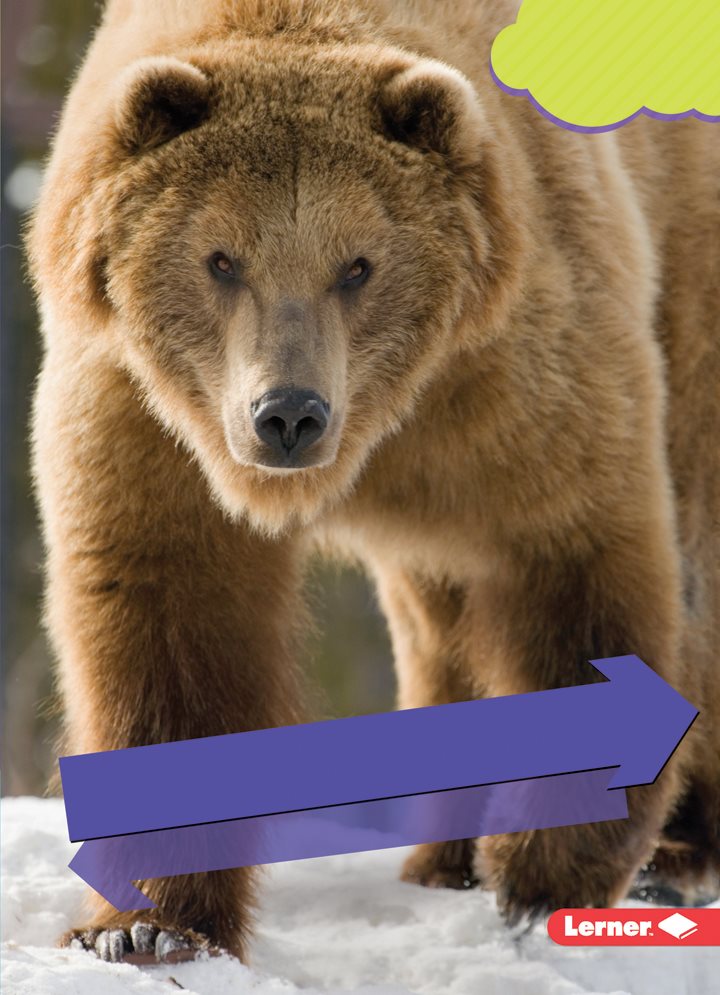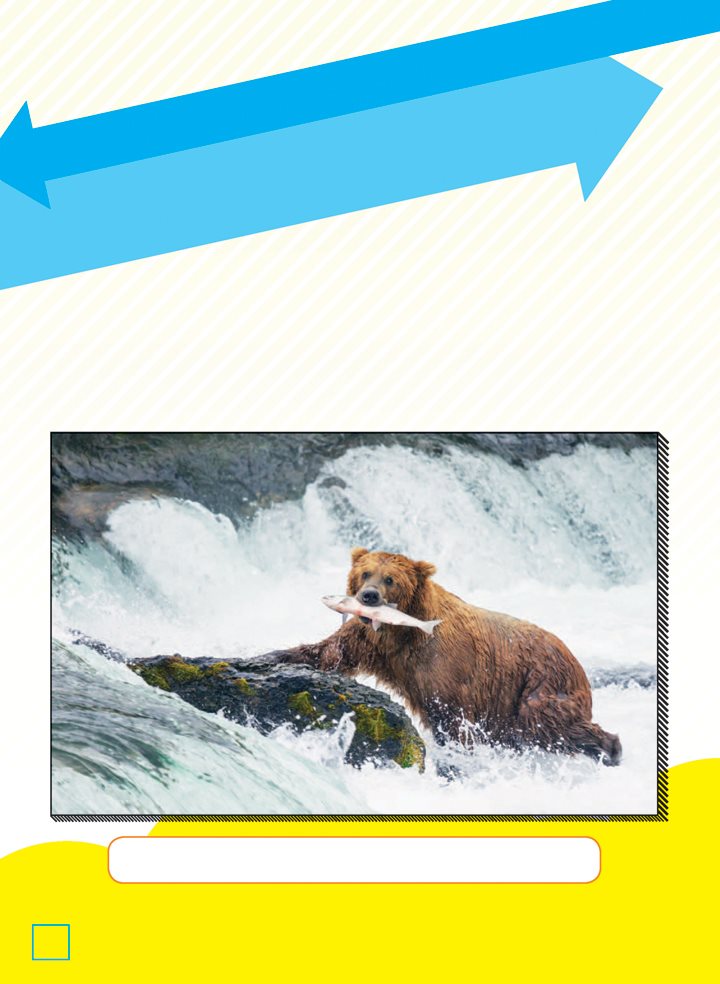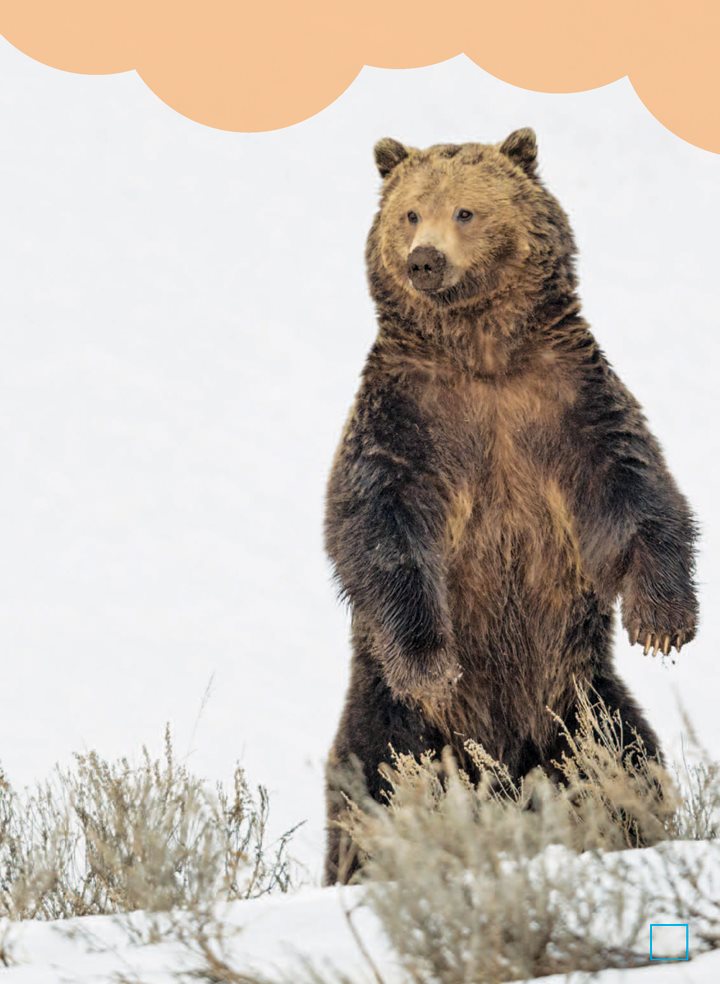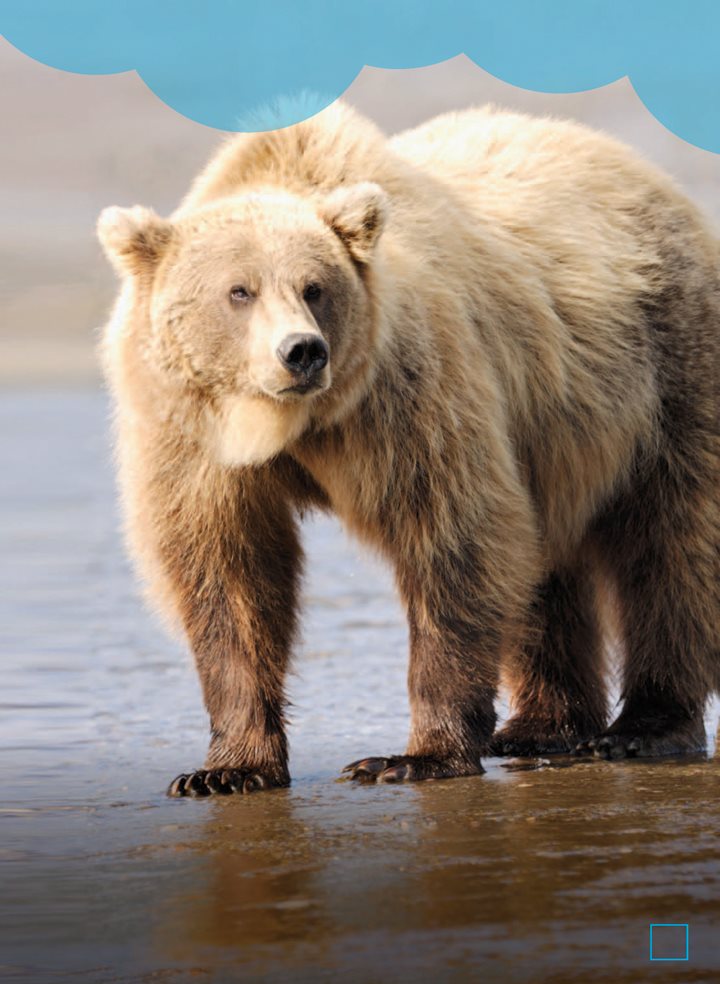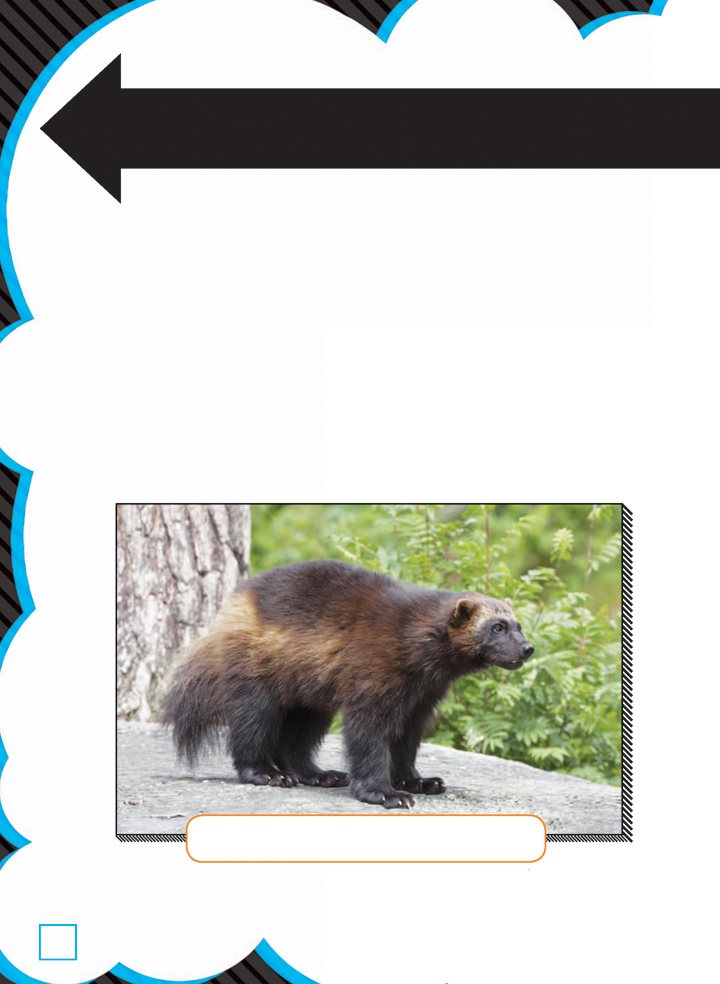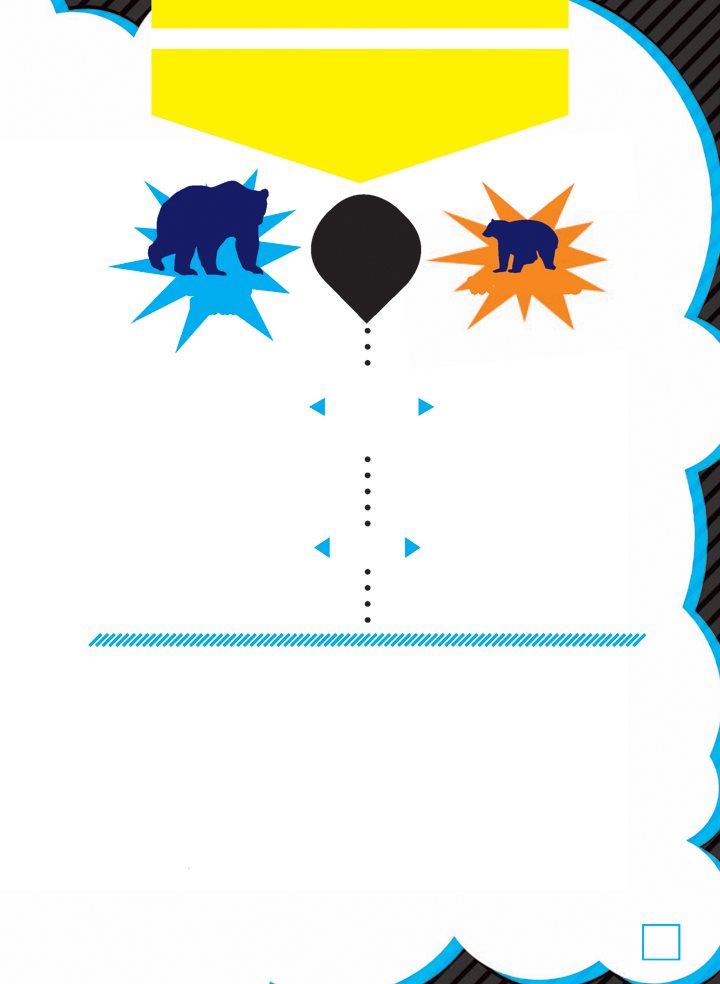comparing
ANIMAL TRAITS
GRIZZLY BEARS
HUGE HIBERNATING MAMMALS
REBECCA E. HIRSCH
Copyright 2015 by Lerner Publishing Group, Inc.
All rights reserved. International copyright secured. No part of this book may be reproduced, stored in
a retrieval system, or transmitted in any form or by any meanselectronic, mechanical, photocopying,
recording, or otherwisewithout the prior written permission of Lerner Publishing Group, Inc., except for
the inclusion of brief quotations in an acknowledged review.
Lerner Publications Company
A division of Lerner Publishing Group, Inc.
241 First Avenue North
Minneapolis, MN 55401 USA
For reading levels and more information, look up this title at www.lernerbooks.com.
Photo Acknowledgments
The images in this book are used with the permission of: Dennis W. Donohue/Shutterstock.com, p. 1;
Galyna Andrushko/Shutterstock.com, p. 4; Dawn Wilson Photo/Shutterstock.com, p. 5; Dennis
Donohue/Dreamstime.com, p. 6; Laura Romin & Larry Dalton/Alamy, p. 7; iStock/Thinkstock, p.
8; Mark Payne-Gill/Nature Picture Library/Alamy, p. 10; Paul Freed/Animals Animals, p. 11 (top);
Minden Pictures/SuperStock, p. 11 (bottom); Mapping Specialists, Ltd., Madison, WI, p. 12; Kelly
Funk/Getty Images, p. 13; Natalia Paklina/Buiten-beeld/Getty Images, p. 14; Ingo Arndt/Getty Images,
p. 15 (left); Drew Buckley/Alamy, p. 15 (right); John E Marriott/All Canada Photos/Getty Images, p. 16;
George Ostertag/Superstock/Alamy, p. 17 (left); US Fish and Wildlife Service, p. 17 (right); Dennis
W. Donohue/Shutterstock.com, p. 18; Stouffer Productions/Animals Animals, p. 19; Biosphoto/
SuperStock, p. 20; Rolf Nussbaumer/Alamy, p. 21 (top); http://www.birdphotos.com/Wikimedia
Commons (CC BY 3.0), p. 21 (bottom); J. L. Woody Wooden/Moment/Getty Images, p. 22; Animals
Animals/SuperStock, p. 23 (left); Richard Wear/Design Pics Inc/Alamy, p. 23 (right); iStockphoto.
com/Dieter Meyrl, p. 24; Daisy Gilardini/Oxford Scienti c/Getty Images, p. 25; Krzysztof Wiktor/
Shutterstock.com, p. 26; Animals Animals/SuperStock, p. 27 (left); Gerard Lacz Images/SuperStock,
p. 27 (right); Meriel Lland/Oxford Scienti c/Getty Images, p. 28; John E Marriott/All Canada Photos/
Getty Images, p. 29 (left); Peter Macdiarmid/Getty Images, p. 29 (right).
Front cover: iStockphoto.com/JudiLen.
Back cover: Dennis Donohue/Dreamstime.com.
Main body text set in Calvert MT Std 12/18. Typeface provided by Monotype Typography.
Library of Congress Cataloging-in-Publication Data
Hirsch, Rebecca E., author.
Grizzly bears : huge hibernating mammals / By Rebecca E. Hirsch.
pages cm. (Comparing animal traits)
Summary: This book covers information (life cycle, appearance, habitat) about the grizzly bear. Each
chapter discusses an aspect of the grizzly bears life, comparing the bear to a similar mammal and to a
very different mammal. Provided by publisher.
Audience: Ages 710.
Includes bibliographical references and index.
ISBN 978-1-4677-5578-8 (lib. bdg. : alk. paper) ISBN 978-1-4677-6061-4 (pbk.)
ISBN 978-1-4677-6217-5 (EB pdf)
1. Grizzly bearJuvenile literature. 2. Grizzly bearLife cyclesJuvenile literature. I. Title.
QL737.C27H545 2015
599.784dc23 2014027201
Manufactured in the United States of America
1 BP 12/31/14
TABLE OF CONTENTS
Introduction
MEET THE GRIZZLY BEAR
Chapter
WHAT DO GRIZZLY BEARS LOOK LIKE?
Chapter
WHERE GRIZZLY BEARS LIVE
Chapter
THE GRIZZLY BEARS YEAR
Chapter
THE LIFE CYCLE OF GRIZZLY BEARS
INTRODUCTION
MEET THE GRIZZLY BEAR
A grizzly bear stands in a roaring stream and plunges its
head into the water. The bear comes up with a large silver
fish in its mouth. Grizzly bears belong to a group of animals
called mammals. Other groups of animals include insects, fish,
amphibians, reptiles, and birds.
This grizzly bear has caught a fish! Grizzly bears eat both plants and animals.
What are mammals? Mammals
are warm- blooded animals.
This means they keep their
bodies at a steady temperature.
All mammals are vertebrates,
or animals with backbones.
All mammals have fur or
hair. And all mammal
mothers feed their babies
milk. Grizzly bears share
these traits with other
mammals. But grizzly
bears also have some
traits that set them apart.
CHAPTER
WHAT DO GRIZZLY BEARS
LOOK LIKE?
Grizzly bears are a member of the bear family. This family of
mammals includes polar bears and giant pandas. A grizzly bear
measures to feet (0.9 to 1.2 meters) at the shoulder and up
to feet (2.4 m) standing up. It weighs up to pounds (363
kilograms). Male grizzly bears are almost twice as large as females.
The head of a grizzly bear is large and round. A grizzly bear has
sharp teeth, round ears, and a muscular hump at its shoulders. It
also has long claws on its front feet. The claws and the shoulder
muscles make the grizzly a powerful digger.
DID YOU KNOW?
Grizzly bears are
BROWN BEARS
that live only in North
America. Other brown
bears live in Europe
and Asia.
A grizzly bear is a kind of bear called a brown bear. Even so,
a grizzlys fur may be blond, brown, or black. The thick fur
covers the grizzly bears head and body. Grizzly fur is often
white- tipped, or grizzled, which is how the bear got its name.
GRIZZLY BEARS VS.
WOLVERINES
Wolverines climb through snow- covered mountains and
forests across northern Europe, Asia, and North America.
Wolverines are the largest member of the weasel family.
Although wolverines are much smaller than grizzly bears,
the two animals look a lot alike. The Blackfoot American
Indian term for wolverine even translates to skunk bear.
Both grizzly bears and wolverines have rounded ears and
pointy teeth. Wolverines can crush bone and chew through
frozen meat with their powerful jaws. And like grizzly
bears, wolverines have sharp claws. These claws help the
wolverine dig and climb.
Some wolverines have pale stripes in their fur.
COMPARE IT!
GRIZZLY

